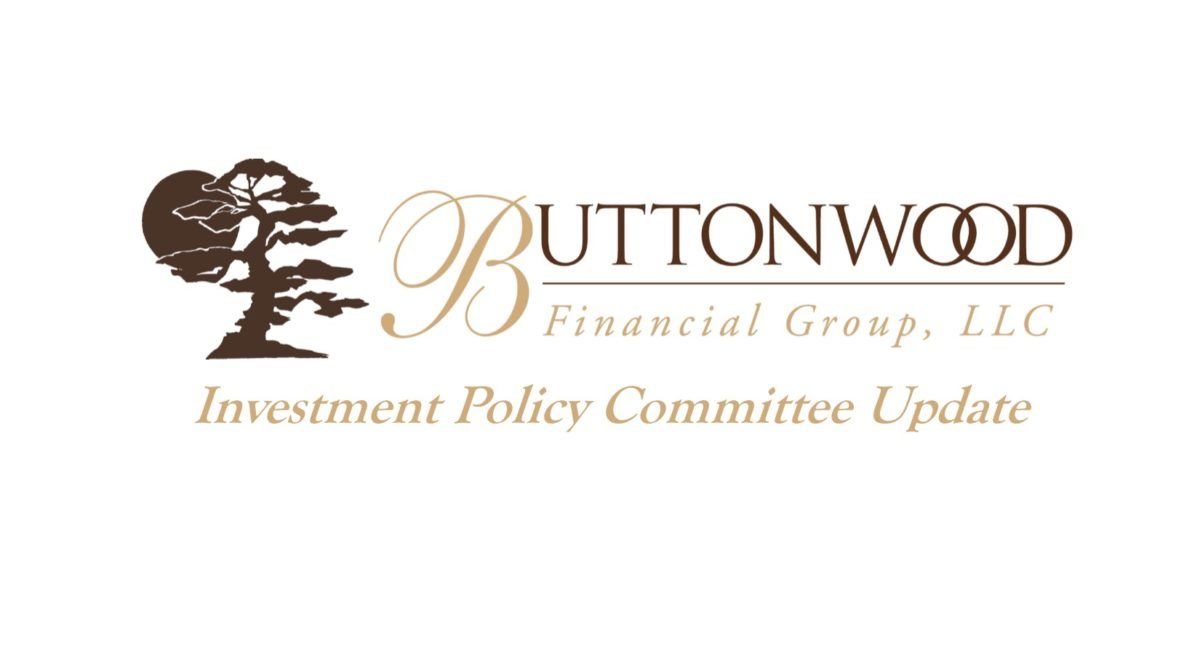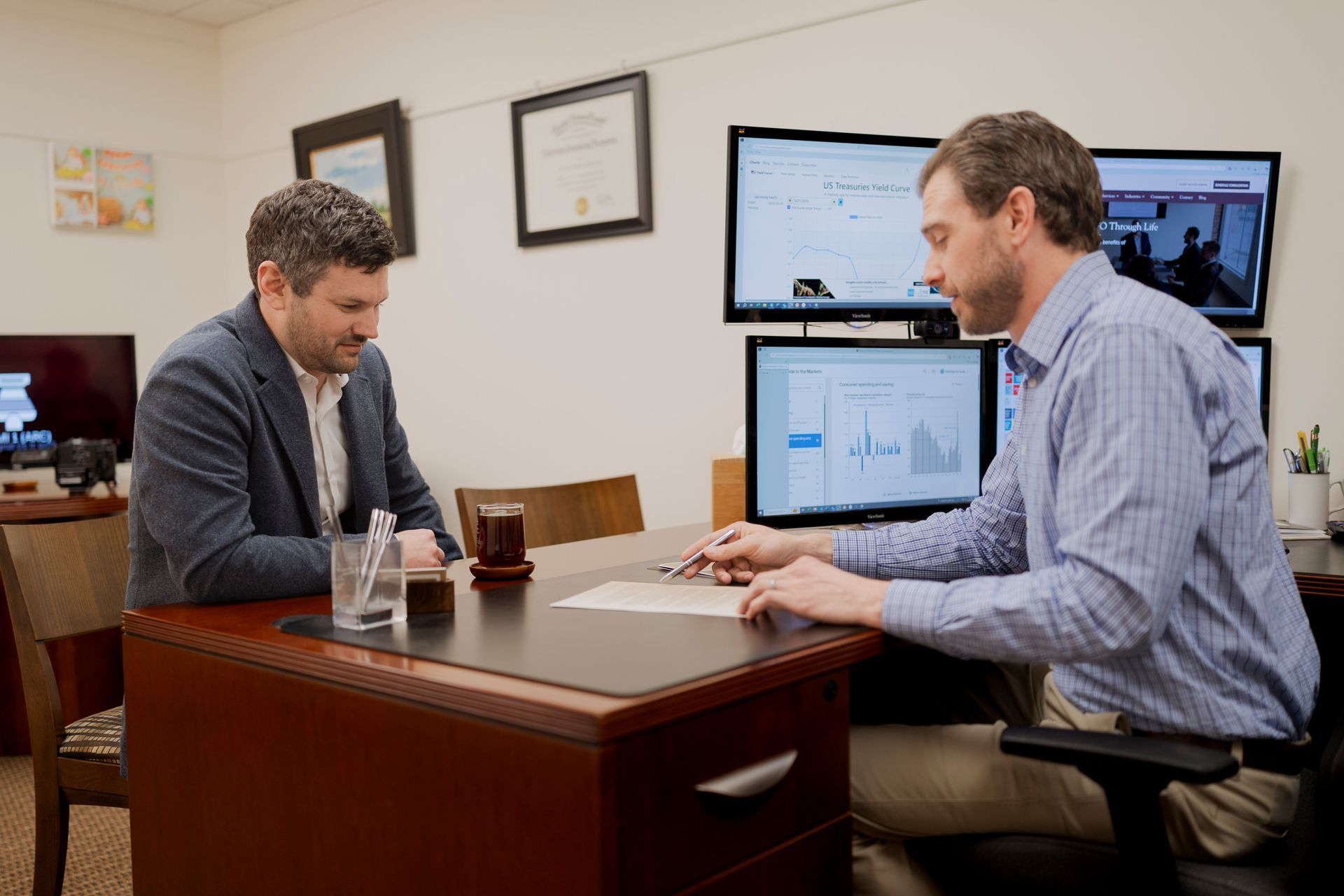Buttonwood Investment Policy Committee Update – May 2020
It will be a challenge to accurately measure the rate of change through which we have just lived. As COVID19 began its sweep around the globe, every day saw the implementation of change on an hourly basis – something the world population has never seen before. To add to the disruption, billions of news releases and COVID19 statistics poured conflicting information into the world. It has been a whirlwind to say the least.
What about the markets?
In times of horrible economic news but rebounding stock markets, it’s important to understand stock markets are forward-looking. When change happens, the markets adjust to reflect that change – the best they can. From all-time highs in February, to the lows at the end of March; the major stock indices fell about 40%. The reality moved from an opportunistic view of 2020, to one of unknowns, lockdowns and an ever-increasing death rate.
However, as the onslaught of information began to show specific trends, more clarity appeared and the markets began to digest, and adjust to, what the world might look like 6, 9 months or a year from now. We know economic data will show a huge decline in activity – on scale with the Great Depression. We also know there are many bright minds working on multiple iterations of vaccines, and that an effective vaccine will likely return our world to some type of a pre-COVID19 state. As such the markets, looking forward, have staged a strong rebound since those March lows.
Each quarter earnings season arrives and provides us a look at the financial health of businesses. With the impact of COVID19, earnings season this quarter wasn’t so much about the dollar amount of earnings, but about the trends: Which companies (sectors) are successfully navigating the trend changes and which are not. The winners and losers have been easy to spot. If you are a tech company providing vital tools for “work from home”, you are winning. If you are an airline or restaurant, life isn’t good. Every business falls somewhere on this scale. As expected, traders have been moving assets into winners and selling the losers: Tech stocks are near all-time highs. Following popular trends can create risks. Of the 11 sectors in the S&P 500, just 3 (Tech, Communications and Healthcare) now make up more than 50% of the S&P 500 market cap.
Where do we go from here?
The interpretation of what all this will eventually look like for the US economy has been extrapolated into a series of alphabet soup. Early on we saw the “V” (quick down and back up as we reopen), then came the “W” (hope for a successful reopening but fail), the “Y”, “L”, the “Nike Swoosh” and more. The “U” recovery (quick down and slower recovery) seems to be where the majority has now set the ‘base case.’ That said, when you combine the Wall Street sentiment readings, the consensus shows more confusion than conviction.
We thought Columbia Threadneedle provided a good “U” bottom graphic : “Controlling the rate of infection will be the chief determinant of economic recovery. We currently expect a “u-shaped” recovery, meaning that it will take 10 calendar quarters for the U.S. to get back to prior levels of activity. Until a vaccine is widely available, possibly in fall 2021, we may see one or more localized rebounds of COVID-19 infections. But each subsequent peak should be more muted due to increased immunity, better testing capacity, more experience with social distancing and new therapies.”
We continue to implement o ur 2020 theme: Participate but defend!
Based upon technical trends, starting last December, rather than investing deposits, dividends and interest, we begin to hold cash. During the week of March 23, we fully invested available cash for accounts with a longer-term focus. In April and May, for taxable accounts, we have been proactive with tax loss harvesting. For all investment accounts, we have been active with cash management; reviewing and repositioning assets for the highest yield.
With the focus of the Buttonwood Investment Policy Committee being to produce a more consistent rate of return over full economic cycles, we remain invested but defensively positioned in both stock and bond markets. We continue to have exposure to lower volatility stocks and to higher quality bonds. We have not yet added back direct exposure to oil, real estate, or junk bonds as we believe it will likely take some time for strength to return to the economies of the world. We will continue to watch the economic / business cycle and have a multi-step strategy designed to increase risk and index exposure as we emerge from our current COVID19 recession. If we aren’t seeing signs of emergence, we will continue to remain more defensively positioned.
We are in no rush to take big risks – with a more consistent rate of return, we will all have a smoother financial ride through life. This is the process we consistently used in 2008-2009 and most recently in Q4 2018. With algorithms and computer trading leading to big / fast moves, this strategy will likely not let us catch the exact bottom, however we are very likely to catch the longer-term trends.
If you have specific questions about our strategy, please let us know and we will review details at our next meeting. And while we don’t recommend fixating on short term market fluctuations, if you would like to check specific performance of your investments, our Buttonwood Portal is available 24/7/365, or you can contact us and we can provide reports specific to your questions and financial life.
Thank you for your trust and allowing us to serve as your Family CFO. Stay safe as we enjoy interacting once again with friends and family!
The post Buttonwood Investment Policy Committee Update – May 2020 appeared first on Buttonwood Financial Group, LLC.
Recent Buttonwood Articles
Are you ready to explore the benefits of your very own Family CFO?







